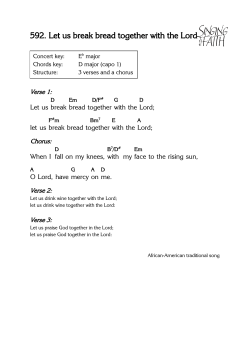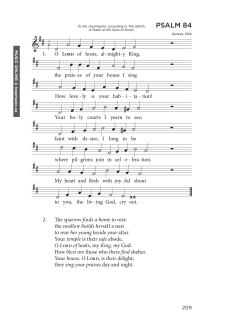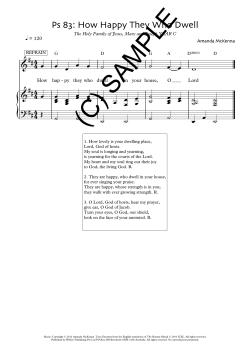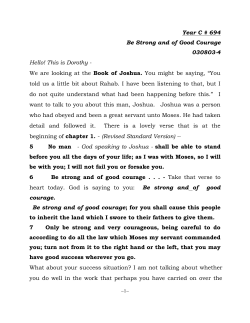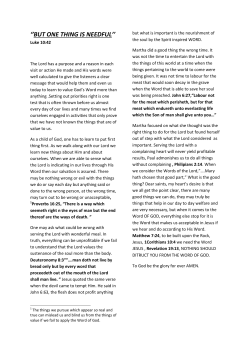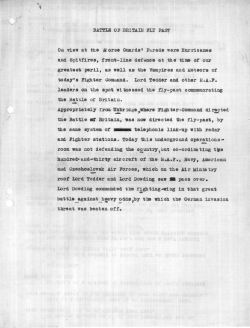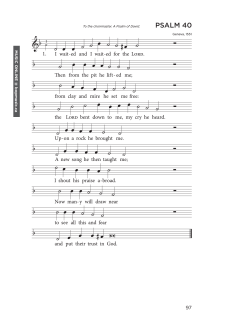
॥ िà¤à¤¦î रठà¥à¥à¤¨à¤à¤°à¤¾à¤î¨à¥à¤¤à¥ ॥
ु ॥ ॥ िचदरं ौीनटराजती .. Chidambaram ShrINatarajastutih with Comments .. sanskritdocuments.org April 10, 2015 Document Information Text title : chidambaram shrInaTarAjastuti File name : chidambaramnaTarAjastuti.itx Location : doc_shiva Language : Sanskrit Subject : philosophy/hinduism/religion Transliterated by : N.Balasubramanian bbalu at satyam.net.in Proofread by : N.Balasubramanian bbalu at satyam.net.in Translated by : N.Balasubramanian bbalu@satyam.net.in Latest update : August 17, 2012 Send corrections to : Sanskrit@cheerful.com Site access : http://sanskritdocuments.org ु ॥ ॥ िचदरं ौीनटराजती ु ॥ ॥ िचदरं ौीनटराजती नमे ि मव उतोत इषवे नमः । नमे अ ु धन े कराां ते नमो नमः ॥ १॥ याते ि िशवा तनूः शाा त ै नमो नमः । नमोऽ ु नीलमीवाय सहॐााय ते नमः ॥ २॥ ु ं मीढु माय ते नमः । सहॐपाणये त ु ं कालपाय ते नमः ॥ ३॥ कपिदन े नम नमे चाशाय नमे शूलपाणये । ु ं िहरयपतये नमः ॥ ४॥ िहरयपाणये त नमे वृपाय हिरके शाय ते नमः । ु ं पथीनां पतये नमः ॥ ५॥ पशूनां पतये त ु ु ं ेऽाणां पतये नमः । पानां पतये त आततािवपाय वनानां पतये नमः ॥ ६॥ रोिहताय पतये वृाणां पतये नमः । ् ाणां पतये नमः ॥ ७॥ नमे मिणे साात क ओषधीनां च पतये नमः सााराने । उ ैघषाय देवाय पीनां पतये नमः ॥ ८॥ ु ं घनानां पतये नमः । सानां पतये त सहमानाय शााय शराय नमो नमः ॥ ९॥ ु ं ाधीनं पतये नमः । आधीनां पतये त ु ु ककभाय नम ं नमेऽ ु िनषिणे ॥ १०॥ ु ं धनानां पतये नमः । ेनानां पतये त ु पतये पापहािरणे ॥ ११॥ तराणां नमं वते पिरवते ायूनां पतये नमः । 1 ु ॥ ॥ िचदरं ौीनटराजती 2 ु ं अरयानां पतये नमः ॥ १२॥ नमो िनचेरवे त ु ं नमे परमाने । उीिषणे नम ु आसीनाय नमोनमः ॥ १३॥ िवृताय नमं ु सषु ाय ु नमो नमः । शयनाय नं ु िराय परमाने ॥ १४॥ ु ूबाय नमं सभापाय ते िनं सभायाः पतये नमः । नमः िशवाय सााय ॄणे सवसािणे ॥ १५॥ ् ु सूणम ॥ ॥ इित सूतसंिहतायां मिु काडे सभापितितः Comments by N.Balasubramanian bbalu@satyam.net.in The following abbreviations are used in the commentary. SS - Shiva Sahasranamam (Padmapuranam with the commentary of Shri Paramasivendra Sarasvati) VS - VishnuSahasranama. BG - Bhagavad Gita The above verses are in praise of Lord Nataraja at the famous shrine in Chidambaram. They are from Suta Samhita, Mukti Kanda. The Suta Samhita talks about the glory of Chidambaram in chapters 9 and 10. The puranas say that it is one of the most hallowed places on earth. For For vaishnavas, the word ‘temple’ refers to Shrirangam. Others refer to Chidambaram as ‘temple’. It is one of the मिु ेऽम ् places where one gets liberation just by seeing it. The following verse says that. दशनादॅसदिस, जनः कमलालये । ् िु ः, रणादणाचले ॥ काँया ु मरणात म MEANING:- One gets liberated by seeing Chidambaram, by being born in Tiruvarur where there is the tank Kamalalaya, by dying at Kashi and by merely thinking of Arunachala. Chidambaram is also one of the places renowned as Kailas on earth where the Lord is ever present and confers liberation. The following verse says that. ु िचदरसभा गोकण-पापरी ु सेतवु ातपरी ु शोणािि वृाचलाः । ेतारय-वटाटवी ौिु तपरी काी ौीिगिर कालहिनगरी के दार-वाराणसी ॥ िचदरं ौीनटराजतु ी ॥ कै लासा इित शर िनलया ाता मिु ूदाः ॥ Maharshi Jaimini, in his Vedapadastava ौीवेदपादवः says that one who utters the name Chidambaram sets out on his way to liberation. ् कृ ननविजतः । िचदरिमित ॄूयात स ु ॥ ु मिघटामिणपथं मोमेव समते The holy place is said to be the heart (दय ानम)् of the Virat Purusha representing the universe. The deities at other temples are said to merge with Nataraja after the last puja for the day is over and the temples are closed for the day. THE TEMPLE:- The origin of the temple is lost in antiquity. Historical references to it take one back to 6th century CE. It was built in 10th century. Krishnadeva Raja, the king of Vijayanagar has also contributed to the building of the temple. It is a magnificient edifice and occupies a vast area of about 18 acres. Amongst the temples in India it occupies a pre-eminent place because of its antiquity, richness in terms of worship, the festival traditions and the architectural and sculptural profusion. Its association with music and dance is unique in nurturing the cultural heritage of our country. It has four towers of about 50 meters tall. They carry elaborate carvings including the 108 classical dance postures. The sanctum is known as Kanaka Sabhaकनक सभा or the golden hall. So, He is known asकनकसभापित Kanaka Sabhapati or simply as सभापित Sabhapati, Sabesan and Sabhanayakan. The Lord also has the golden hue. He, therefore has the name (SS-273) िहरयः- िहरयसश-सवाो िहरयः । ु इित ौिु तः॥ आूणखाव एव सवण He dances in the golden hall. The sabha or hall represents the heart. One is advised to meditate on Him as available in the heart. Taittariya Upanishad (1-6)says this. ु मनोमयः। अमृतो िहरमयः। स एषोऽदय आकाशः। तियं पषो So, one who can see the Lord in the sabha or within the heart gets liberated. This is what is meant by saying quoted aboveदशनादॅसदिस that one gets freed by seeing Chidambaram. दॅ = small or little. The small space in the 3 4 ु ॥ ॥ िचदरं ौीनटराजती heart is referred to here. The Mundaka upanishad (3-1-3) makes this abundantly clear. ु ॄयोिनम ।् यदा पँयः पँयते वण कतारमीशं पषं तदा िवाु यपापे िवधूय िनरनः परमं सामपु ैित ॥ MEANING:- When one sees the Purusha (Self within) - the One having the colour of shining gold, the creator, the Lord and who is the source then he becomes illuminated, completely shakes of all bondage (karmas that bind and cause rebirth), becomes pure and becomes one with Him. The same subject is also discussed in chapter 8 of Chandogyopanishad wherin the subject is called दहर िवा। दहर means small and the heart itself. It says:- ् परेु दहरं पडरीकं ु अथ यिददमिन ॄ वेँम दहरोऽिराकश-िन य् ददें, ताव िविजािसतिमित ॥ १.१॥ MEANING:- In this body there is a small house; in it there is space; one should seek and find what is in it. The space is known as दहराकाशम s् mall sky to differentiate it from the big sky we see around us. Shri Krishna clearly talks about this more than once. ु ते । ानं ेय ं ोितषामिप तोित-मसः परम ् (BG 13-17) ानगं िद सव िवितम ॥ again:सव चाहं िद सििवः मः ृितानमपोहनं च । वेद ै सवरहमेव वेः ् (BG 15-15) वेदाकृ ेदिवदेव चाहम ॥ The gist of the above verses may be said as this. The Lord is seated in the heart of all and is behind all their actions. He is of the form of pure wisdom. He is to be known and can be known only by wisdom. The following verse, also from the mouth of Krishna says that He is not just sitting in the hearts, but enlivens every cell in the body. ईरः सवभतू ानां ेशऽे जनु ितित । ् वभतू ािन याढािण मायया ॥ (BG 18-61). ॅामयन स Modern science confirms the fact that cells in the body have intelligence. Even when one is asleep or in coma or under sedation, activities go on within the body of which one is not aware. The blood ॥ िचदरं ौीनटराजतु ी ॥ circulation goes on. Cells receive nutririon from the blood stream and exchange waste material and accept oxygeon and so on. Similar activities take place within every living being including plants. This shows that the Lord in the form of consciousness pervades the entire universe. This activity of the Lord who is seated in the heart is called His dance. To sum up, Chitिचत ् means intelligence and also Brahman - the Supreme Being. Ambaram -अरम ् means the space or ether. The scriptures often compare Brahman to space, because they share many common attributes. For example space envelops everythinng the entire universe - in fact and is imperceptible to senses. So, the place Chidambaram may be taken to be the external representation of the Chidambaram within every one. For these reasons said above Chidambaram occupies a prime position in our culture comparable to Kashi and Rameshvaram. Our tradition says that one should make it a mission to visit Chidambaram and see the temple in one’s lifetime - else the purpose of life is not fulfilled. The Tamil shaivaite saints, known as Nayanmars have gone ecstatic on seeing the Lord, sung at Chidambaram and poured out their joy in many songs in praise of the Lord . Normally a devotee prays to the Lord to spare him from the agony of rebirth. But one nayanmar wished that to drink in the divine beauty of the Lord at Chidambaram he should be born again and again. Another nayanmar says in one of his songs that any day that one does not talk of the Lord is wasted as he can be deemed to be not born on that day. One unique feature of the temple at Chidambaram is that as one stands facing the sanctum of Nataraja, he can also have the darshan of Lord Ranganatha (रनाथः) lying on His splendid serpant bedशेष सयनम ् and in the lotus that comes out of His navel is seated Lord Brahma the creator. Thus the fortunate visitor to the temple can have the darsan of all the three gods - Brahma, Vishnu and Shiva - at one go. Lord Nataraja is also the very personification of bliss. According to Saiva Agamic texts the ananda aspect of the Lord is represented by the form of Nataraja. The realisation of Nataraja’s dance within the recess in the devotee’s heart unites him 5 6 ु ॥ ॥ िचदरं ौीनटराजती with Shiva as said above. Ranganatha (who is Vishnu) is also bliss personified. He has the name आनः:- आनपमेित आनः, एतस्यैवानन्दस्य अािन भूतािन माऽामपु जीवि इित ौतु ःे । (VS -526). He is ु वणः, also of golden hue says the sahasranama (737, 738) सवण हेमाः। He also shines in the devotees’ hearts. The great Acharya Vedanta Deshika says this in his wonderful poem Shri Bhagavaddhyana sopanam (ौी भगवान सोपानम).् In fact this is the very first verse in the poem. Please note how wonderfully sweet is this verse. अितः िकमिपयिमनामनं योगेः िचारं ु ु सलभिमह नः िसिमोानपम ।् दीनानाथ सनशमनं ु ु दैवतं दैवतानां िदं चः ौितपिरषदां ँयते रमे ॥ Thus, He and Nataraja are one and the same but have different forms. The great scholar devotee Shri Appayya DikShitar spent his last days in Chidambaram. He was a staunch advaitin and so saw no difference between the two - Nataraja and Ranganatha. He has composed a unique poem हिरहर अभेद िु तः wherein he says he sees no difference between the two. The Chidambaram temple has a seperate shrine within the main temple dedicated to Devi who bears the name Shivakamasundari. She represents the Maya shakti of Shiva. When Lord Nataraja is dancing at Chidambaram four persons - Patanjali, Vyagrapada, Nandhi and Bhringi are the blessed ones who witness the devine phenomenon. The first two are maharishis and the other two are devarishis. Devarshis are deified divine sages, such as Atri, Bhrugu, Angiras etc. Thus Nandhi and Bhringi are always with the Lord. Just like the sun setting at a village in the evening also sets in all other places in the evening, so also Shiva dances at Chidambaram in the evenings implies that He dances in the evenings at other places too. The dance of Lord Shiva is described in the following verse from Shiva thandava stotram. The third line of the verse mentions who are all witnesing the dance. अननव-र-िवलसटक-िकििण-एहललझललरवं ॥ िचदरं ौीनटराजतु ी ॥ ु ु -िविध-ह-गत-मल-लयिन-िधिमििमत-नतनम ।् मक ु -दिमख ु -भृि-िरिट-स-िनकटं शकुरथ-बिहरथ-निमख ु -वित-पदं पर-िचदर-नटं िद भज ॥ सन-सनक-ूमख शकुरथ = one who has the bird as His vehicle शकुः= bird. रथः = chariot or vehicle. So, the word शकुरथ refers to Vishnu who has Garuda as his vehicle. Next, बिहरथ = One who has peacock as His vehicle. बिहन ् = peacock. So, the word बिहरथ ु = one having the face of an refers to Kartikeya. दिमख ु म ् = face. Refers to elephant. दिन ् = elephant. मख Ganapati. भृि-िरिट-स-िनकटं = The group consisting of those mentioned here, namely, Vishnu, Kartikeys, Nandi, Ganesha and the sages Bhringi and Riti. सम ् = group. िनकटम ् = nearby. Of course we have to include His consort Parvati Devi who is always with Shiva. The last line asks us to meditate on the feet of Nataraja which is worshipped by great sages such as Sanaka and Sananda. Shiva as Nataraja and DakShinamurthy are facing the south which is the direction presided over by Yama the god of death. By this they show that those devotees who apprach Him will not be bothered by Yama. Both are having the demon Apasmara who represents ignorance or avidya under their foot. Thus there is no difference between the two. The Tamil saint Thirumular in his famous work Thirumandiram says that the dance of Lord Nataraja symbolises His five acts. The five acts of Lord Shiva are said in the following verse from Sarvadarsanasangraha (सवदशनसहः). They are creation, preservation, destruction, obscuration and blessing. पिवधं तृ ं सृि-िित-संहार-ितरोभावः । ु तदनमहकरणं ूों सततोिदता ॥इित। The small drum He holds in His hand signifies SRISHTI or creation; the lower right hand that offers protection signifies STHITI or preservation; the upper right hand that holds the flame stands for destruction; the foot that keeps down the asura Apasmara indicates TIROBHAVA or obscuration and finally the perennial dance indicates ANUGRAHA or blessing; all these to bless the devotees. The Lalitha Sahasranama mentions all these five actions. 7 ु ॥ ॥ िचदरं ौीनटराजती 8 सृिकऽ ॄपा गोी गोिविपणी ॥ ११४॥ संहािरणी िपा ितरोधानकरीरी । ु सदािशवाऽनमअदा पकृ परायणा ॥ ११५॥ LEGEND:- Sage Saunaka once met Nandhikeshvara and expressed his desire to see the dance of the Lord. Nandhikeshvara said that himself, Uma Devi, Lord Ganesha and Lord Guha witness His dance in Kailasa every day in the evenings as said above. The time is known as ूदोष time. ु म ् says Amara the Sanskrit dictionary. It is ूदोषो रजनीमख the time of onset of night. It is auspicious and is to be devoted exclusively for prayer and meditation. Nandhikeshvara replied saying that it is not easily available to others. If he went to Chidambaram, took bath in the Shivaganga tank, chanted the holy panchakShara mantra and also worshipped Lord Sabhapathy for one year then he can witness His dance in the following year. He should start the program from the holy month of Dhanus (9th month in the solar calendar). Sage Saunaka did exactly as advised by Nandhikeshvara and could witness the dance of Shiva in the following year in the Dhanus month on the day presided by Ardhra star. The day is celebrated in Chidambaram as Ardra Darshanam. Thousands of devotees gather at Chidambaram to witness the celebrations. The sages who had assembled in the holy place Naimisharanya heard the above story from Suta who knows and narrates the puranas. They expressed a desire to witness the dance. Suta prayed to his guru Sage Vyasa who appeared there immediately. Shri Vyasa advised them to go to Chidambaram and repeat the same program as prescribed by Nandhikeshvara to Saunaka. The sages successfully completed the program and as a reslt could enjoy the divine dance. They praised the Lord Nataraja with the above hymn which contains the essence and wordings of the famous vedic hymn Shri Rudra. The Kaivalyopanishad says that one who recites the hymn Shri Rudra is absolved of all sins. ु यः शतिीयमधीते सोऽिपूतो भवित, सरापानाू तो भवित, ु मािौतो भवित। ॄहाूतो भवित, तादिवम This hymn being a condensation of Shri Rudra is bound to grant similar benefits on the reader. ॥ िचदरं ौीनटराजतु ी ॥ SAGE PATANJALI:Any talk about Chidambaram will be incomplete without a mention of Sage Patanjali. He was an incarnation of the serpant king Sesha who serves Lord Vishnu. He heard about the glory of the dance of Shiva and became very eager to witness the grand spectacle. AT the same ime he was reluctant to leave the service of Lord Vishnu. The Lord could divine what was going on in Sesha’s mind and granted him permission to leave His services for some time. He advised Sesha to go to earth to Chidambaram and pray to Lord Shiva. Accordingly Sesha came down to earth to Chidambaram which was covered by dense forest at that time. There he met another sage by name Vyagrapada who was worshipping Shiva. Shiva was pleased by their intense devotion. HE appeared before them and granted them their desire to witness His sacred dance. They are blessed to witness the dance every day in the evening from that time. This happened in the first yuga known as Krita Yuga. Patanjali was the first incarnation of Sesha. In the following Tretha Yuga he was born as LakShmana and served the Lord born as Rama. In the next yuga known as Dwapara Yuga he took birth as Rama (Balarama) the elder brother of Shri Krishna. STUNNING FEATURES OF ARCHITECTURAL EXCELLENCY: The place where temple located is the center point of world’s magnetic equator. Three of the five Panchaboothasthala temples, those at Kalahasti, Kanchipuram and Chidambaram all stand on a straight line exactly at 79 degree 41 minutes East longitude - truly an engineering, astrological and geographical wonder. Of the other two temples, Tiruvanaikkaval is located at around 3 degrees to the south and exactly 1 degree to the west of the northern tip of this divine axis, while Tiruvannamalai is around midway (1.5 degree to the south and 0.5 degree to the west). The 9 gateways signify the 9 orifices in the human body. The Chitsabai or Ponnambalam, the sanctum sanctorum represents the heart which is reached by a flight of 5 stairs called the PanchakShara steps - pancha meaning 5, akShara - indestructible syllables - SI VA YA NA MA, from a raised anterior dias - the Kanakasabai. The access 9 10 ु ॥ ॥ िचदरं ौीनटराजती to the Sabhai is through the sides of the stage (and not from the front as in most temples). The Chit sabha roof is supported by four pillars symbolic of the four Vedas . The Ponnambalam or the Sanctum sanctorum is held by 28 pillars representing the 28 agamas or set methodologies for the worship of Shiva. The roof is held by a set of 64 beams representing the 64 forms of art and is held by several cross-beams representing the innumerable blood vessels. The roof has been laid by 21,600 golden tiles with the word SIVAYANAMA inscribed on them representing 21600 breaths one takes in a day. The golden tiles are fixed using 72,000 golden nails which represents the no. of nadis exists in human body. The roof is topped by a set of 9 sacred pots or kalasas, representing the 9 forms of energy. The ardhamandapa (sanctum) has six pillars denoting the six shastras (holy texts). The hall next to the ardha mantapa has eighteen pillars symbolizing the eighteen Puranas. Shri Nataraj Mandir at Satara is a replica of this temple. Now, let us end this commentary with a prayer to the Cosmic Dancer. This is a verse that gives a picture of the dancing Nataraja. It explains the significance of the pose of Nataraja in His dance. ् मकिननदैः घोरसंसारमान ् लोकानाय सवान ड दाभीितं दयाः ूणतभयहरं कुितं वामपादम ।् ु े रयनिमित करात द् शयन ू् याथ उृदे ं िवम ् लयित नटनं िचभायां िशवो यः ॥ िबॅिं स पायात क Meaning: The Lord calls the people struggling in the violent sea of samsara by the sound of the small drum in the right upper hand. By His right lower hand He says ᳚do not be afraid᳚ and offers protection from fear. He indicates by His left hand HIs left foot that is slightly bent as the path to freedom from the frightful samsara sea. He induces the confidence of the people by holding the fire in His left upper hand. Let such a Lord who is dancing in the chit sabha protect us. Encoded and proofread N.Balasubramanian bbalu@satyam.net.in ॥ िचदरं ौीनटराजतु ी ॥ This text is prepared by volunteers and is to be used for personal study and research. The file is not to be copied or reposted for promotion of any website or individuals or for commercial purpose without permission. Please help to maintain respect for volunteer spirit. .. Chidambaram ShrINatarajastutih with Comments .. was typeset on April 10, 2015 Please send corrections to sanskrit@cheerful.com 11
© Copyright 2025

